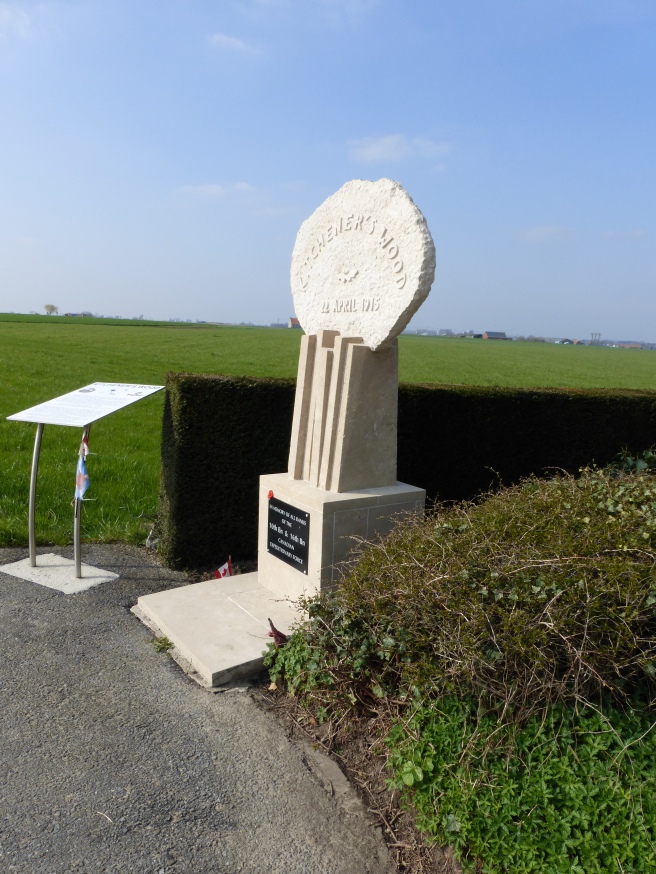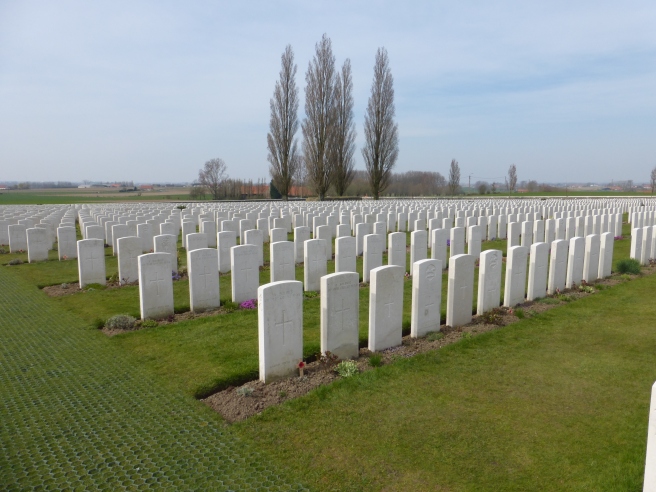If I told you that Marshal Ferdinand Foch, Supreme Commander of the Allied Armies referred to this battle as the “finest act of the war,” would you know of which battle I spoke?1 Would your answer include any mention of the Canadian counter-attack at Kitchener’s Wood? Would you have even hear of Kitchener’s Wood? Perhaps that is too specific – let me ask you this. Would your response have included mention of the Second Battle of Ypres? Or would your mind have turned to Vimy Ridge?

If I say “The Battle of Vimy Ridge,” and you are a Canadian, there is a good chance you know what I am talking about. You might not be able to tell me much, and you probably don’t know many of the details. But you would probably know what I was talking about. You might also tell me that “Canada became a nation at Vimy Ridge.” That is, after all, what our Canadian History classes tell us. That is what the official national memory has declared since the day of the battle. That is the memory that was solidified when the Government chose to place the National War Memorial at Vimy Ridge.
I would not fault you for your statement. You could probably even back your declaration up – after all, we have had almost 100 years to get the story and the memory just right. But wait, I hear you say, are you saying that this statement is wrong? Are you saying that Vimy Ridge was not important? What kind of Canadian military historian are you? To which I will respond – No. I am not saying that the statement is wrong, as such. But I am saying it lacks depth and it misses so much. I am saying that there’s more to the story – if we would only look deeper. I am saying that the memory is too simplistic.
But, as this post is not about Vimy, I am asking you this: What do you know about the Second Battle of Ypres? Now, if you have read a newspaper today, you may be able to form an answer. But could you have answered me yesterday? Would you have remembered your Canadian history? Because this battle is also a major focus of the First World War history taught in schools, but I think it is one that can often be overshadowed by Vimy.
Perhaps you would be able to tell me that it was during this battle that the German army first used gas – and the Canadian line held, though casualties were heavy. But could you tell me what happened next? Could you tell me about Kitchener’s Wood – the battle to which Marshal Ferdinand Foch referred? My guess is that you could not.
But how can you say that? How can you make that assumption? You ask. To which I respond – because I have studied this war for years, I have studied these battles, I could tell you about the beginning of the Second Battle of Ypres in my sleep. I know the story of the chemistry students who remembered that urinating on handkerchiefs might be able to counteract the effects of the chlorine gas. I know the battle. And I am prone to forget about Kitchener’s Wood. Or at least, I was, before I went to Belgium and saw the memorial, read the plaque, and thought about the memory.
100 years ago today, the German army first used chemical warfare on the Western Front. Casualties were high. French troops, who faced the highest concentration of the attack, were forced to retreat. The result of this forced retreat? A 4-mile (over 6 km) gap in the front line. A gap through which the German army, though they hesitated at first, fully intended to move. 2 And so the Canadians (having arrived in France in February) were hastily pulled out of reserve to reinforce the line. In particular, two Canadian battalions were sent to reinforce the line at Kitchener’s Wood. “Reinforce”, however, soon turned into “major counter-attack.”3 And did I mention that the battalions had little training and even less experience?
Despite their inexperience, however, these Canadian battalions managed to push the Germans back. They suffered heavy, heavy losses, and the 16th Battalion dropped from 816 men down to 193 at roll call after the battle (268 all ranks survived).4 But they held. And, more importantly for the Allied forces, the German army was not able to exploit the gap their gas attack had made in the line. This poorly remembered, and lightly commemorated battle, stopped a, potentially major, German breakthrough.
It wasn’t pretty. It was badly organized (read chaotic). It hurt a lot. But somehow it worked. But it is barely remembered. And the battalions involved later had to fight for battle honours, whereas those who fought the days prior and the days after did not.
If anyone thought the counter-attack might provide a moment of respite to the haggard Canadians, however, they would soon have been sorely disappointed. The German army would use gas for the second time on the morning of April 24, 2015. And this time, it was pointed towards the re-formed Canadian line. The Battle of St. Julien had begun and the Canadian experience (and suffering) of the Second Battle of Ypres was far from over.
Megra12
1. Quote taken from the Plaque at Kitchener’s Woods↩
2. A series of decisions and hesitations on the part of the German army meant that they did not take full use of the advantage the gas attack had given them. Chemical warfare was still new and the German army did not expect the attack to have the level of success it did and were, therefore, ill-prepared.↩
3. http://en.wikipedia.org/wiki/Battle_of_Kitcheners%27_Wood and http://www.calgaryhighlanders.com/history/10th/history/stjulien.htm↩
4. http://www.calgaryhighlanders.com/history/10th/history/stjulien.htm↩




















